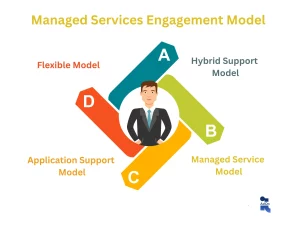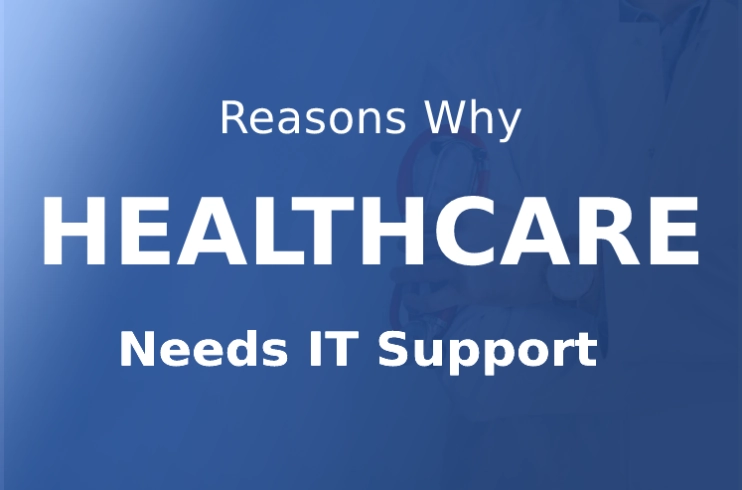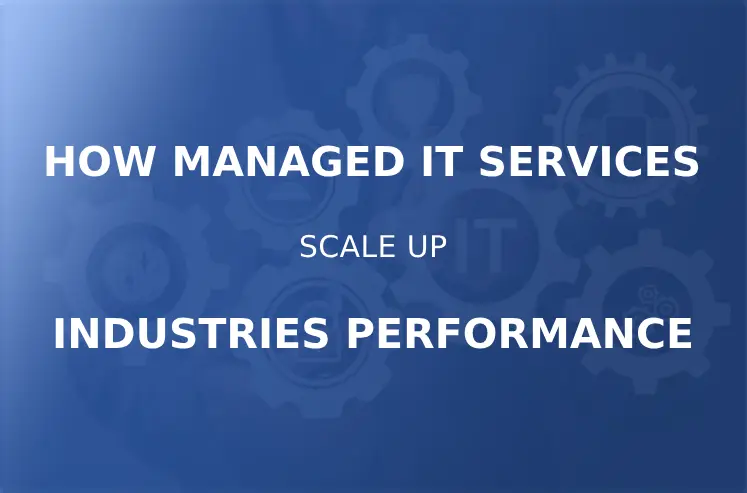What would be the best use of your time if you had a robust IT department of skilled and creative geniuses who could accomplish wonders with codes—maintain or cure common glitches? You might be shocked to learn that by breaking out from this loop, an IT staff can generate income through innovation, skill, and intelligence.
Changing from the 90s break/fix system
To address this, businesses may now opt to outsource the management of their infrastructure, general security, and routine IT activities to outside suppliers. A managed IT services delivery model is a terrific method to handle routine maintenance issues and enhance company operations while giving the organization plenty of time to concentrate on its primary problems and development route.
With this strategy, Managed Service Providers (MSPs) may manage the day-to-day operations and accountability of an organization’s IT process from a distance using the cloud. MSPs provide a variety of products that may be tailored to the needs of the organization, ranging from network monitoring to defending against cybersecurity attacks.
Why are managed IT services so popular?
Maintain your competitive edge by engaging a managed IT service provider, who can offer you professional IT employees without requiring you to make any hiring or training investments. A managed data center can be used by a business to run the servers and applications centrally, resulting in improved employee performance and access to virtual services.
prepared with a plan With managed services, it is simple to plan ahead since the MSP provides guidance on any new infrastructure needed, upgrades that should be made, and system preparations to fend off viruses and failures.
Things to think about while using managed IT services
Here are a few considerations to bear in mind when you transition to a managed services arrangement:
Accountability: Enhancing operational effectiveness and reducing IT problems that impede your organization’s development are the main justifications for choosing managed IT services. Therefore, it is crucial to make sure the MSPs are responsible and constantly deliver on making changes. Asking for frequent reports and analytics to see how their effort is producing change and progress would be a wonderful approach to monitoring progress.
Track record: To make sure an MSP can produce high-quality results and provide proactive services, it is vital to do background or record checks before signing a contract with them. Try to look up their references, learn who their current clients are, and learn about their experience working with these businesses.
Pricing: Select an MSP that provides various pricing alternatives and open communication. Select an MSP that provides end-to-end services in tailored packages, whether it is for application migration or deployment.
How to choose the right MSP?
Did you know that the managed service providers market will increase in worth to USD 671.14 billion by 2030? If you want to be a part of this scenario after considering the pros and cons of Managed IT Services, if you are contemplating finding the right MSP, then it is crucial to keep in mind the size of the MSP model and decide upon the apt pricing model.
Here are a few types of MSPs you can choose:
Low Level – These service providers provide bare-bones services like maintaining the client’s IP network infrastructure or gathering data from the client’s site using an on-site physical server. These MSPs often serve businesses with a modest workforce base of 50 to 300 people.
Mid Level –These MSPs provide a more excellent range of services, such as managing many facets of the client’s network and installing, upgrading, and patching software. These firms cater to Fortune 500 or 1000 businesses.
High Level –The highest-end service providers supply the full range of IT services and are in charge of ensuring that IT workflows and processes are healthy and operating properly.
Choose a pricing model.
Here are some of the standard pricing models offered by MSPs:
Per User: Ideal for businesses where staff use a variety of devices
Per Device: It is effective for businesses interested in paying a fixed cost for each device the MSP supports.
Tiered: The subscription fee is determined by the bundles and specific services included in a package.
Value: Pricing is based on the assumption that managed services provided to the company are subject to a single cost.
Managed Services Engagement Model
After deciding on a capable MSP for your company, the following step is to enter into a service agreement with the provider. A Managed Services Engagement Model enters the picture at this point; it records the client’s specifications and requirements, maintains the amount of services rendered, and specifies the fee structure.
Here are a few readily available and often utilized MSP engagement models:

A) Hybrid Support Model
This uses a “mix and match” strategy where different services are combined to satisfy the diverse needs of the company. As an illustration, a client of managed IT services may require both application development and support. These support teams could be divided across on-site and off-shore locations.
B) Managed Service Model
MSPs are given the greatest levels of tasks and responsibilities in this paradigm since they are in control of the organization’s complete IT infrastructure. As a result, the company under this model may have few or no IT resources, and the MSP is entirely in charge of all services.
C) Application Support Model
This model uses either a simple help desk service or an extensive tech, help model to provide technical support to resolve application-related difficulties. It could also include staff augmentation services, which entail hiring additional on-site IT personnel solely based on the technical knowledge and skill set required, with compensation determined by the number of hours worked.
D) Flexible Model
This strategy, which is appropriate for small enterprises, offers a package that entails choosing a more limited IT support component at affordable prices and does not include any specialized resources for problem resolution. The price structure provides help based on a set quantity of hours each month or year.
Utilizing managed services to be futuristic
While businesses develop a strategy for long-term success and a clear vision, the issue of how they might protect their potential customers in the future via managed services emerges.
1) Staying at the top of tech and market trends
Managed IT service providers (MSPs) are required to consistently remain abreast of emerging technological developments. As they provide top-notch project management assistance and outsourcing models for large enterprises, MSPs must plan the software they want to use both now and in the future.
MSPs must keep up with the various technologies being utilized throughout the world since they are also equipped to manage several time zones.
2) knowing which services bring the most value
MSPs must identify the services that are continually in demand by clients and provide the most value addition if they are to be future-ready. MSPs should build technical competence in their fields to assist customers in compiling and analyzing their data for useful business insights as big data and analytics are the future of organizations.
MSPs should expand their presence in the cloud, which manages customer data that may be analyzed. To guarantee that your company is ready for the future, look for an MSP who specializes in these areas.
3) The right methodology
Organizations should concentrate on quality and improvement approaches in order to improve the Managed Service Provider (MSP) Business Model. By using this strategy, MSPs may create quality improvement objectives to create a culture based on values and quality, evaluate data, communicate results, and enhance risk management.
In conclusion, transitioning to managed IT services unlocks numerous benefits for businesses. With expert IT professionals and Managed Service Providers (MSPs), companies can optimize operations, prioritize growth, and maintain competitiveness. Discover Managed IT Support Provider in Washington DC.
Choosing the ideal MSP is pivotal, spanning from low to high-level services. A formal engagement model solidifies the partnership, clarifying services and costs. Looking ahead, MSPs must stay attuned to tech trends and provide valuable services like analytics and cloud expertise.
Adopting managed services propels businesses towards efficiency, growth, and technological progress. For MSP assistance, connect with us at ITAdOn. Our dedicated IT experts can elevate your business to the next level.






